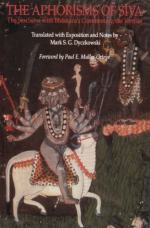|
This section contains 183 words (approx. 1 page at 300 words per page) |
World of Mathematics on Bhaskara
Bhaskara, or Bha-skara-cha-rya as he is sometimes known, was the leading mathematician of the 12th century. He applied the concept of zero, decimal notation, the use of letters to represent unknown quantities in equations, and he developed rules for equations for trigonometry.
Bhaskara was born in Biddur, in India, although his mathematical work was carried out whilst he was head of the astronomical observatory at Ujjain (where he eventually died). The three most important books he published were Lilavati (The Beautiful), which is about mathematics; Bijaganita (Seed Counting), which is about algebra; and an astronomical work, Karanakutuhala (The Calculation of Astronomical Wonders). Lilavati is the first known published work that uses the decimal position system.
Bhaskara spent much of his working life studyingdiophantine equations, and more specifically he studied what we now know as Pell's equation: x2 = 1 + py2 (in which p = 8, 11, 32, 61, and 67). For p = 61 he found the solutions x = 1776319049 and y = 22615390.
Bhaskara was a mathematician whose work predated much of what was to be achieved in Western mathematics by several centuries, and many of his principles are in wide use today.
|
This section contains 183 words (approx. 1 page at 300 words per page) |


